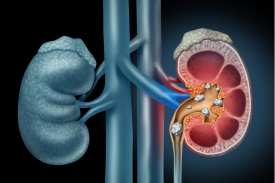The Role of Laparoscopic Urosurgery in the Treatment of Bladder Cancer
Bladder cancer is a prevalent urological malignancy that affects millions of
people worldwide. Fortunately, advancements in surgical techniques have
revolutionized the management of this disease. One such technique is
laparoscopic urosurgery, which offers a less invasive approach to the
treatment of bladder cancer. In this blog, we will explore the role of
laparoscopic urosurgery in the treatment of bladder cancer, its benefits,
and its potential impact on patient outcomes.
Understanding Bladder Cancer:
Bladder cancer occurs when abnormal cells in the bladder multiply and
form a tumor. The disease can manifest in different stages, ranging from
non-invasive (confined to the inner lining of the bladder) to invasive
(spreading into the deeper layers of the bladder wall). Treatment options
for bladder cancer depend on various factors, including the stage of the
disease, the patient overall health, and their treatment preferences.
The Role of Laparoscopic Urosurgery:
Laparoscopic urosurgery, also known as minimally invasive or keyhole
surgery, has gained popularity in the field of urology, including the
treatment of bladder cancer. This surgical technique involves making small
incisions in the abdomen, through which specialized instruments and a
camera (laparoscope) are inserted to perform the procedure. Here are
some key aspects of the role of laparoscopic urosurgery in the treatment of
bladder cancer:
1. Radical Cystectomy: Radical cystectomy, the removal of the bladder,
is a common procedure for invasive bladder cancer. Laparoscopic
radical cystectomy offers several advantages over traditional open
surgery, including smaller incisions, reduced blood loss, shorter
hospital stays, and faster recovery times. The surgeon can remove
the bladder and surrounding lymph nodes, while maintaining surgical
precision and minimizing trauma to surrounding tissues.
2. Lymph Node Dissection: In cases of invasive bladder cancer, lymph
node dissection is often performed to determine the extent of the
disease and guide further treatment decisions. Laparoscopic lymph
node dissection allows for accurate staging and identification of
lymph node involvement while minimizing surgical trauma and
potential complications.
3. Urinary Diversion: Following bladder removal, a urinary diversion
procedure is necessary to reroute urine from the kidneys to a new
outlet. Laparoscopic techniques can be employed to create a
neobladder (a new reservoir within the body) or construct a urinary
conduit (diverting urine to an external bag). Laparoscopic urinary
diversion offers similar benefits as other laparoscopic procedures,
including reduced postoperative pain and faster recovery.
4. Enhanced Visualization: Laparoscopic urosurgery provides surgeons
with high-definition, magnified views of the surgical field. This
enhanced visualization allows for precise identification and removal
of cancerous tissues while sparing healthy surrounding structures. It
improves surgical accuracy and reduces the risk of leaving
cancerous cells behind.
5. Reduced Complications and Improved Recovery: Laparoscopic
urosurgery is associated with fewer complications compared to
traditional open surgery. Patients undergoing laparoscopic
procedures generally experience less blood loss, decreased
postoperative pain, reduced risk of infection, and shorter hospital
stays. Additionally, the smaller incisions result in minimal scarring
and faster recovery times, allowing patients to return to their daily
activities more quickly.
Conclusion:
Laparoscopic urosurgery has significantly impacted the treatment of
bladder cancer by providing a less invasive alternative to traditional open
surgery. With its benefits of smaller incisions, reduced blood loss, shorter
hospital stays, and faster recovery times, laparoscopic urosurgery offers
improved patient outcomes and enhanced quality of life. It is important for
patients diagnosed with bladder cancer to consult with a qualified urologist
to determine if laparoscopic urosurgery is a suitable treatment option for
their specific case.



